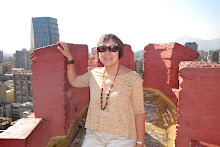The Development of Money in Jamaica
People are created to live together, like bees living together in groups. We work in different fields, so we can help each other to make our lives more enjoyable and comfortable. In most areas and cultures of the world, people used the barter system which means exchanging goods among ourselves. Some had crops and others had lifestock for example.
I chose the development of money in Jamaica for this essay for several reasons. The first is because I couldn’t find enough material talking about money in my country, Saudi Arabia. The second reason is because I found many interesting things in the roots of Jamaican currency, and since none of my classmates is from Jamaica, it will be something new for us all.
First of all, I want to give brief description of Jamaica. It is the third lardest island in the Caribbean and the largest English-speaking one. Jamaica is about 160 kilometers south of Cuba. The population was estimated 8 years ago at 2,652,689. It is primarily of African with mixed race people.1
Secondly, there are some interesting facts about Jamaica. One is that, it is in third place on the list of countries of the Miss World competition, but considering the size of Jamaica, that is an achievement. Another is that, the tip of the the blue mountains in Jamaica was the first land sighted by Christophor Columbus. Finally, Jamaica was the first commercial producer of bananas in the Western Hemisphere.2
Like other cultures, the first Jamaicans, the Taino Indians, used the barter system. When the Spanish arrived in the 1490s, trading began. They used beads and trinkets. By the early 1500s, coins were in use on the island. They were called maravedis and were made of copper. Theses coins were stamped with different symbols which indicated different values.3
By the 17th century, Jamaica became an English colony. At that time, it received a large supply of coins, but the most popular were the Spanish silver dollars or eight-real coins. These stayed until 1839 when Jamaica adopted official British paper currency.
In the early 19th century, the British introduced a single form of currency for all of its colonies, silver coins called anchor money.3
In December 1840, British currency became that of Jamaica by law. There was no usage of Spanish coins except of Spanish doubloons. In the years following, after the freedom of slaves, Jamaicans were in need of money in small denominations. In 1869, the first Jamaican coins known as pennies and ha'pennies were made from cupro-nickel alloy.3
In conclusion, we can see how money developed in Jamaica, and what affected this development. There were many factors that contributed to this like the presenee of the Spanish and later as a British colony. Their independence furthered this development, and we can now see the island influence on their coins and bills.(483)
sarah bahammam
Wednesday, October 15, 2008
Subscribe to:
Post Comments (Atom)

1 comment:
I didn't know that Jamaica was good exporting bananas. Your essay is very lucid, not verbose and it sticks to the main point. I should learn a little bit of that (hehe)
Fernando Blohm
Post a Comment